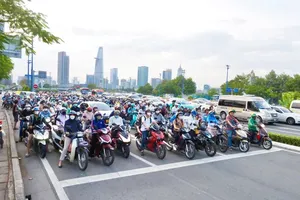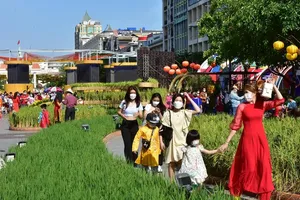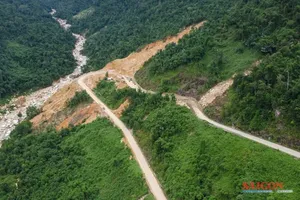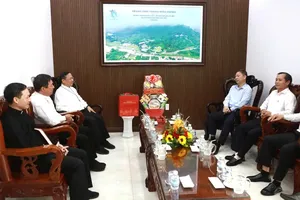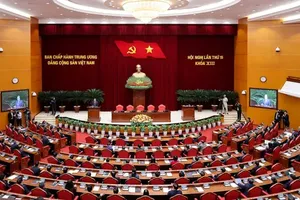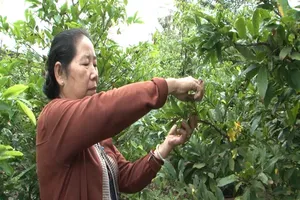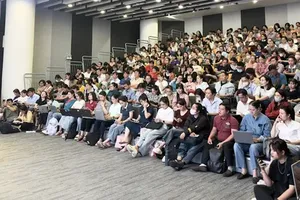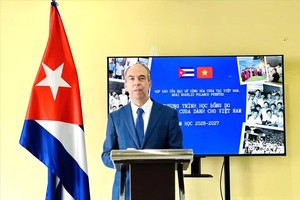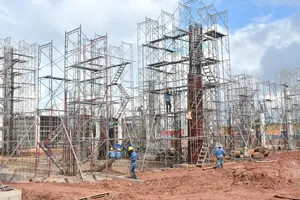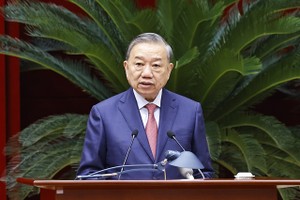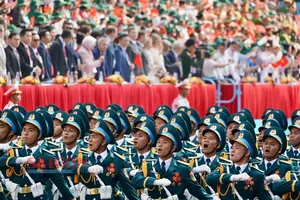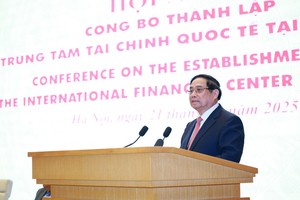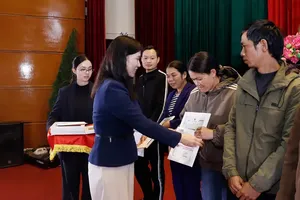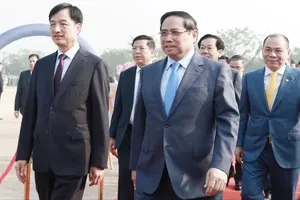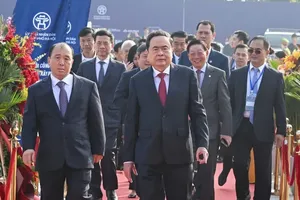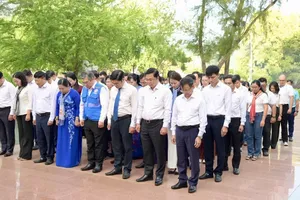SGGP reporters recently left bustling Ho Chi Minh City for Bao Loc – a town in the Central Highlands province of Lam Dong – for a visit to Bat Nha monastery.
We were enjoying the peaceful and poetic landscape of the windy highland town when our car stopped at the monastery, the sacred home of local Buddhist monks.
Bat Nha is located on a hill with a path to the Dambri Waterfalls tourism center, 20 km from downtown Bao Loc.
Entering through the monastery’s three-step staircase, we headed through to the central chamber, where an imposing statue of Quan The Am Bo Tat (Avalokitesvara Bodhisattva), known as the “Buddha of Compassion,” stands.
An elderly monk came up to us from the garden behind the central chamber and said: “Nam mo a di da Phat” (a prayer of homage for the Amitabha Buddha). In response, we clasped our hands in front of our chests.
“I am Thich Dong Thanh,” said the monk. “I lead my religious life here.”
He showed us around the monastery and said it was named after an important Buddhist prayer book. “The sacred home has a long history,” the Venerable added.
“In the late 1970s, our An Lac monastery in Bao Loc, headed by Venerable Thich Duc Nghi, faced financial difficulties,” said the monk. “The late Reverend Thich Dong Quang and I were tasked by the Venerable with seeking a new place to live and worship, and finding funding to support the monastery.
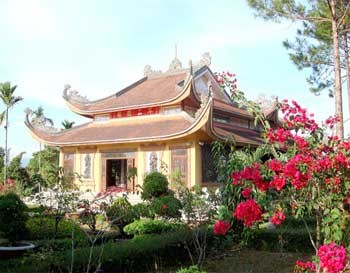
“We walked nearly 20 km and found a high hill covering about 6 ha near a waterfall. In the distance was a mountain, which could serve as a point d’appui. That area now belongs to Dambri commune of Bao Loc town.
“We asked the land owners if we could purchase the property for worshipping purposes and they let us have it for a small fee. We then set up a small hermitage and a few years later, we expanded the premises with money contributed by Buddhists from all over, and in 2000, the central chamber of the monastery was built.
“As you know, we who lead a religious life have no money to build monasteries. Bat Nha was set up thanks to the kindness and support of other Buddhists. But some people say that it was built from money sent home from abroad by the Most Venerable Thich Nhat Hanh. That is untrue, since the main part of the monastery was expanded and upgraded before the Venerable returned here.
“In 2005, the Most Venerable Thich Nhat Hanh visited the monastery at the invitation of Venerable Thich Duc Nghi, and some time later the Lang Mai (Plum Village), a Buddhist meditation center set up by the Most Venerable in France in 1982, paid for the construction of sub-works at the monastery.
“The Most Venerable Thich Nhat Hanh selected Phuong Boi Am (Phuong Boi Temple) as the name of the three-storey building – among the said sub-works – that houses the monks and nuns. This made a number of Buddhists misunderstand that the building is his former place of worship.
“Some time before 1975, the Most Venerable Thich Nhat Hanh and Reverend Thich Thanh Tu set up a small pagoda in Phuong Boi, a couple of dozen kilometers from here. In 1973, the Most Venerable Thich Nhat Hanh went abroad, while Reverend Thich Thanh Tu moved to Da Lat in 1982.
In regards to a controversial incident last August and September in which a number of Lang Mai followers gathered in Bat Nha to practice Zen meditation, the monk said: “Bat Nha monastery is ours and is headed by the Most Venerable Thich Duc Nghi. But when Lang Mai’s Most Venerable Thich Giac Vien was elected ‘deputy head,’ some dignitaries in the monastery were no longer respected as earlier.
“During that time, in the eyes of local Buddhists, the monastery was not as sacred as before. The local authorities did not interfere in our internal issues, they just checked the worshippers’ temporary residence registration, and in fact, the Lang Mai followers who stayed in Bat Nha had not registered for their stay.
“A group of local Buddhists gathered at the monastery on September 27 to put pressure on the Plum Village followers to leave. Conflict occurred but not to the violent extent as reported on some foreign websites.
“Lang Mai followers later cleared out of the monastery and came to stay at Phuoc Hue Pagoda headed by Venerable Thich Thai Thuan. I knew that they left the pagoda on December 29 and returned home or to their regular places of religious practice.”
He continued: “That is the truth. I have received many visiting delegations, both local and foreign, to whom I have told what really occurred here. After visiting Bat Nha and Phuoc Hue, the head of the EU delegation said to Venerable Thich Phap Chieu – head of the Lam Dong Province’s Buddhist Sangha’s Executive Committee – that if they had not come here in person and simply believed the stories on the Internet, they would have misunderstood what actually happened.”
On the return to Bao Loc, we found ourselves watching the sunset against a backdrop of wild, golden sunflowers. We felt a sense of peace come over us as we strolled away from tranquil Bat Nha monastery.
